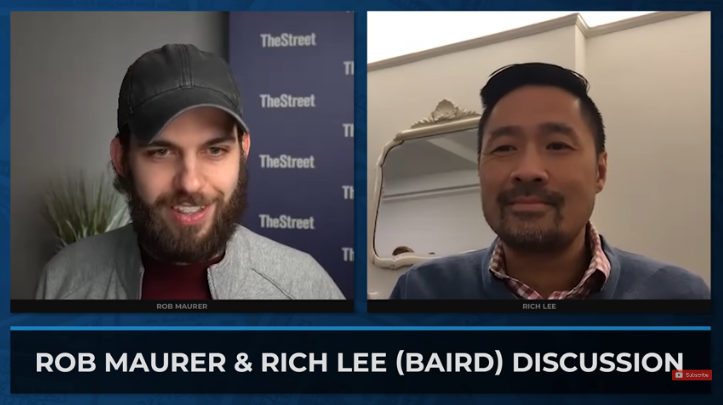Video: Inside Tesla’s S&P 500 Inclusion

Rich Lee, Baird’s Head of Program Trading, recently sat down with Rob Maurer of Tesla Daily on the eve of Tesla’s inclusion on the S&P 500. The two talked about the anatomy of a major trade, how funds might approach the inclusion and what investors should know about such an event.
Following are highlights from the discussion.
You can see the full interview on Tesla Daily’s YouTube channel
On How Funds Approach an S&P 500 Inclusion
“If you think about your typical index fund that's benchmarked to the S&P 500, [they] tend to be low-cost, low-expense ratio funds, so they can't have what's known as a lot of tracking error in the funds… by and large, what you would see ‘vanilla’ indexers do, or index funds that are tracking the S&P 500, is buy the shares on the close, because obviously as you know, mutual funds and tracking funds are tied to net asset valuations, which are tied to the closing price of stocks in the stock market.”
A Highly Anticipated Inclusion
“There's been a lot of buzz about it. People have been talking about this trade. I mean, people have been talking about TSLA's potential and inclusion into the S&P 500 since over the summer. And then they thought it was going to happen for September. It didn't get announced, and you had the stock sell off. So there's been a lot of excitement about it, and people have kind of known that this is coming.”
On why the inclusion was announced more than a month in advance: “What [they’re] doing is basically allowing the market and the ecosystem of market participants to prepare for this event. To your point, people may have seen the announcement and say, ‘Hey, here's a great opportunity to get an asset at retail. I'm going to buy it low and hopefully sell it higher up.’ You may have active money managers that have sat on the position for a few years and accumulated a position and view this as a liquidity event. And it's a good opportunity to maybe take some shares off. So again, by announcing, it allows all market participants to prepare for this event.”
Trading on a Quadruple Witching
“Tomorrow [December 18, the date of Tesla’s S&P 500 inclusion] is quadruple witching. And any quadruple witch, which happens quarterly, is always a very busy trading day. And again, because [mutual funds and tracking funds] are tied to a net asset valuation, which happens as a result of participating or happens as a result of the published closing price on the official primary exchange on which the stock is listed, you will see the majority and the bulk of the buying happen on tomorrow's close.”
“These tend to be dates where the S&P 500 and some other associated indexes will enact the published index changes… it becomes a very important date with regard to liquidity concentration.”
Liquidity Concerns Around a Massive Trading Event
“There's certain considerations with regards to liquidity. However, that said, I think having it on one particular date also kind of pools your liquidity as opposed to spreading it out. That was one of the proposals, which is to spread the inclusion event over two separate days. What you now have is one date - one coordinated, aggregated liquidity point for which investors, and hopefully the marketplace, can rally against… so hopefully, what you want to see is a robust liquidity environment, where there are buyers and sellers coming out.”
Inside the Closing Cross
“You see buy and sell imbalances on the closing auction on the primary exchanges all the time. It gets disseminated, I believe, at 3:55 every day, right? So what happens is, ‘Hey, there's net shares to buy.’ And what that does is by indicating that net buy or sell interest, it allows other participants to kind of come in and potentially offset some of that interest… so what happens is stock continues to build, and you'll see imbalances go back and forth until it's supplied, and you've supplied as many of what's called market-on-close orders, and you can match as many buyers and sellers as possible. And so, there's this whole sort of uncrossing mechanism that happens on the exchanges.”